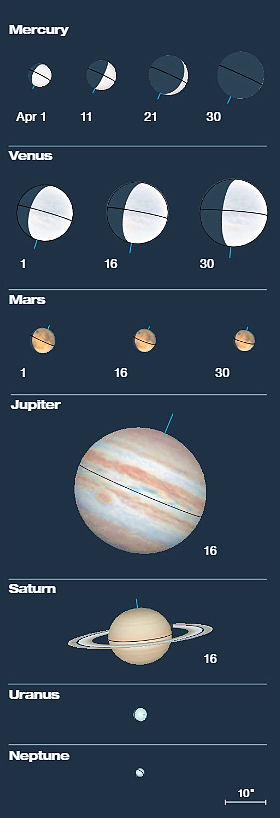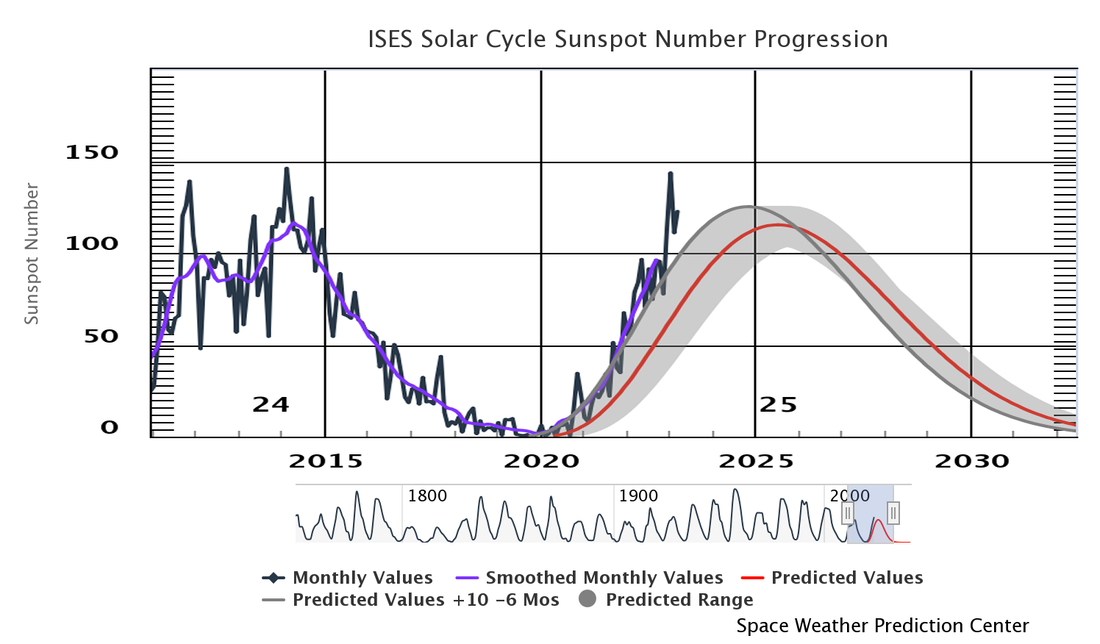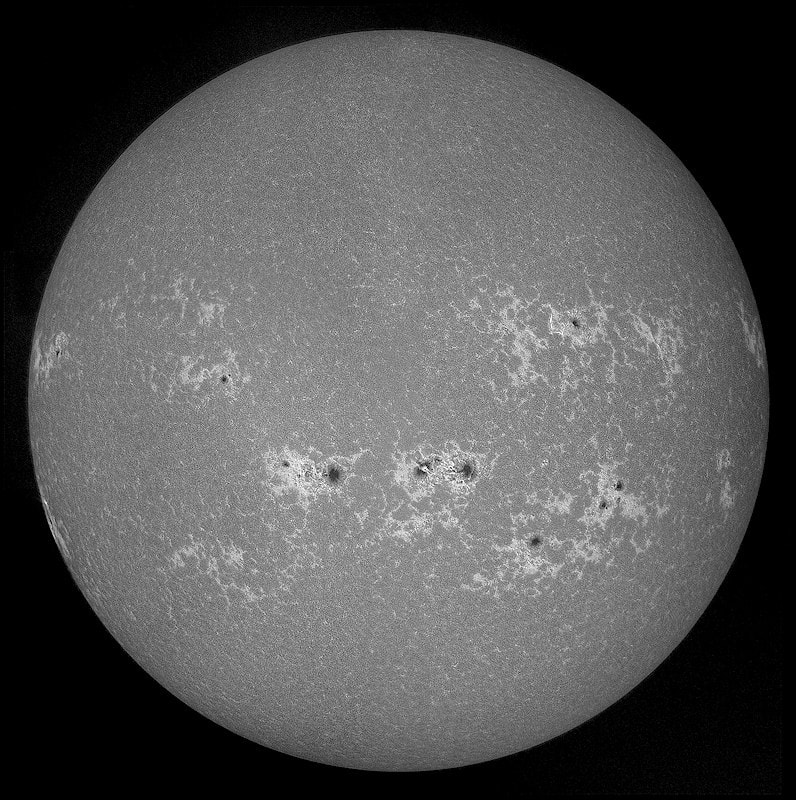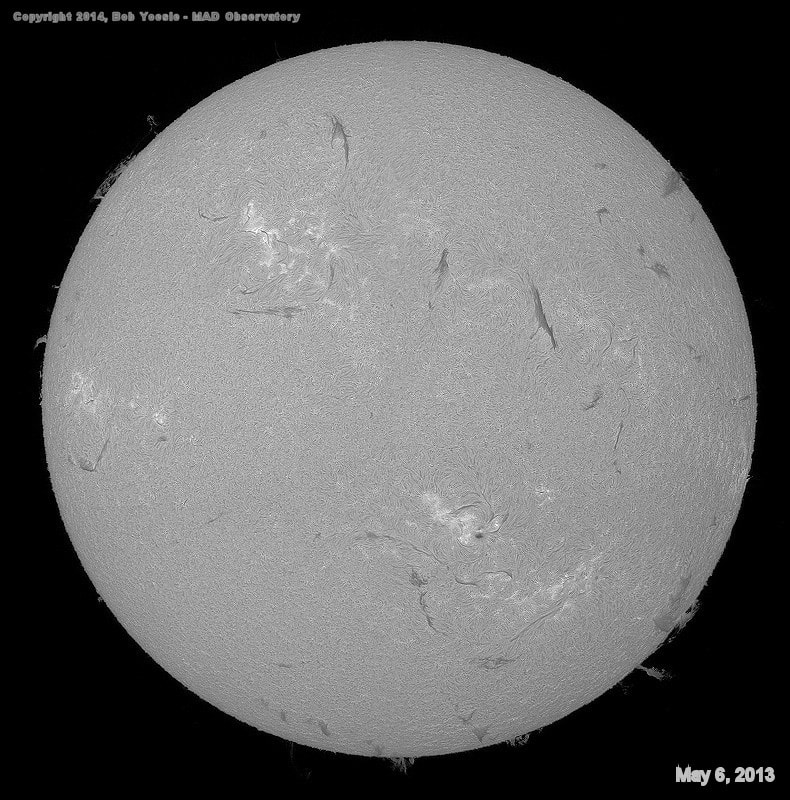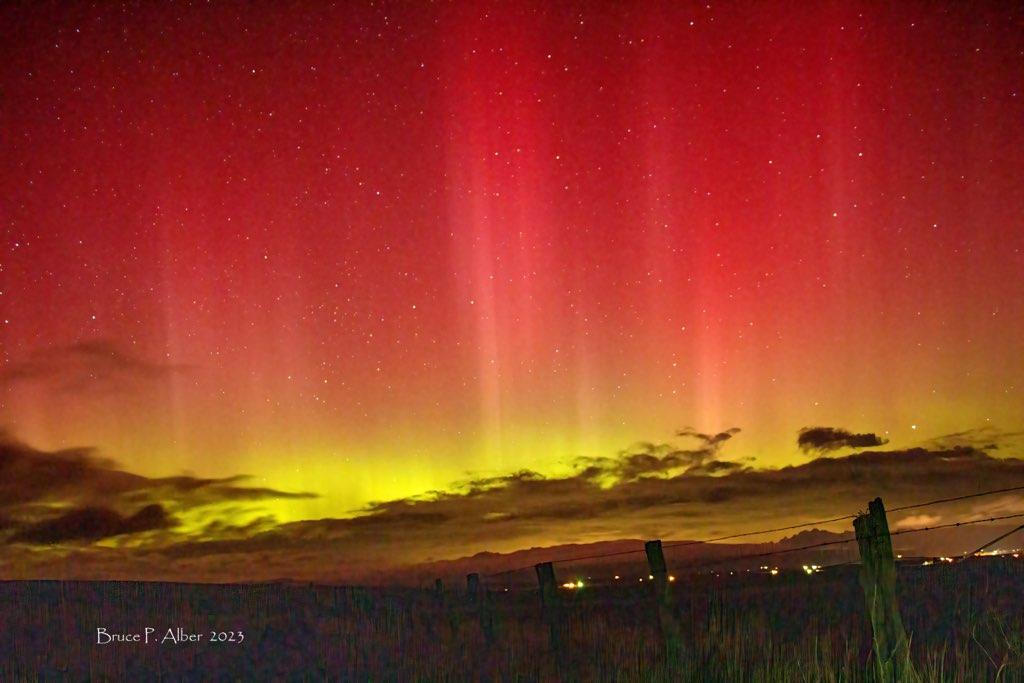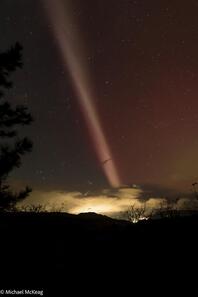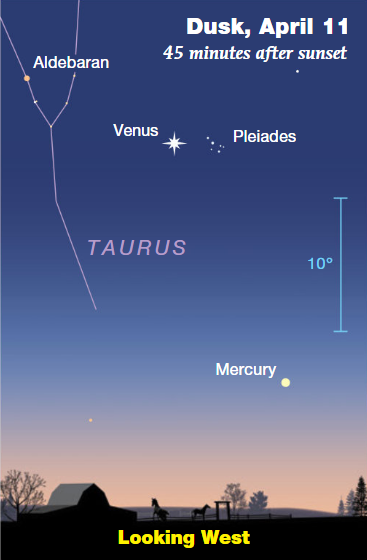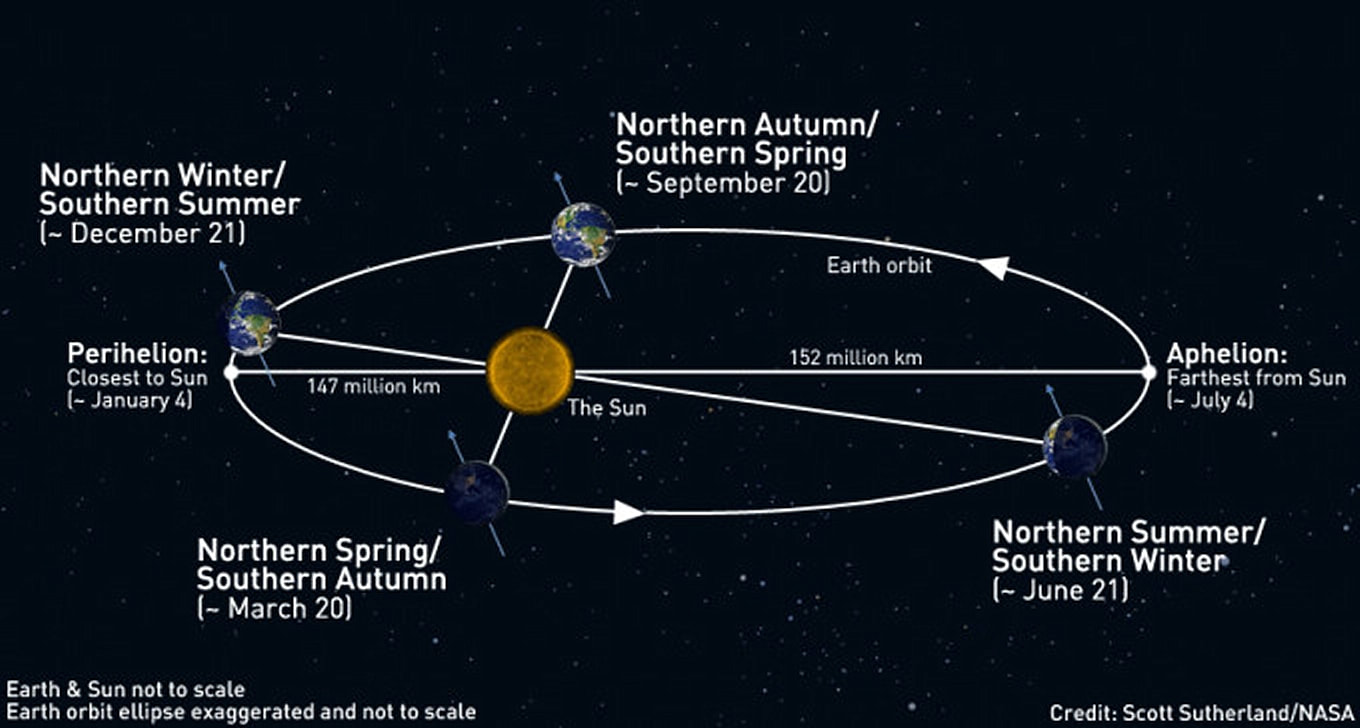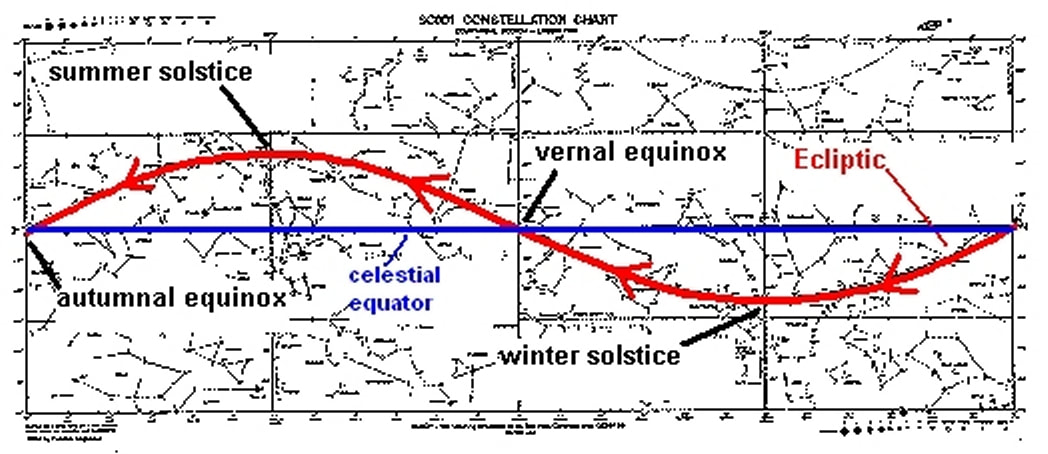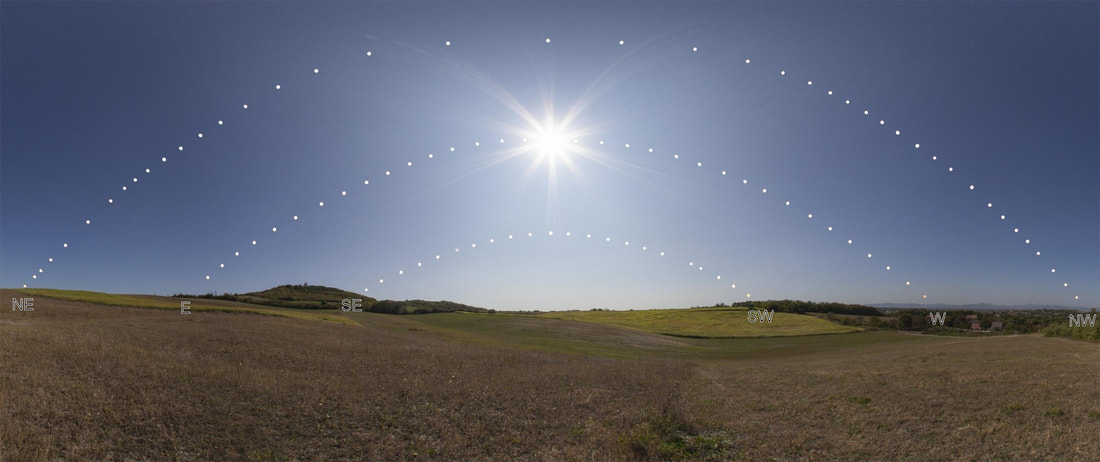April Night Sky
Sky events for this month & objects for observation can be found here.
Click to enlarge. A larger printable version of this chart can be found here.
PLANETS FOR APRIL
In the chart above for mid-month, the colored arrows show the motion of each planet and the Sun during the month. The Moon is plotted for the evening dates in the Americas when it's waxing (right side Illuminated and the visible surface of the moon increases) or full, and for the morning dates when it's waning (left side illuminated visible surface of the moon decreases). Right Ascension and Declination are the equivalent of longitude and latitude of celestial objects. The Ecliptic is the line followed by the Sun in the sky throughout the year. Note that most of the planets and the Moon are located close to this plane. The Local Time of Transit indicates when the area of sky passes the meridian line from directly south to north. Sky & Telescope.
|
PLANET SIZES & ILLUMINATION
Using a telescope one can observe Mercury's and Venus's phases, Jupiter's cloud belts and moons, and Saturn with its magnificent ring system. Venus is the bright "evening star" in the southwest after sunset. Jupiter is in conjunction with the Sun and difficult to see, while Mars' disc is now very small, but remains well placed in the sky for northern hemisphere observers. Saturn is now in the morning sky. Neptune and Uranus remain very far away, have relatively small discs, and generally reveal little if any detail. Graphics - Sky & Telescope
THE SUN HAS AWAKENED! Daylight hours are getting longer, and solar activity is increasing as well. Telescopes equipped with approved solar filters are a safe way to see sunspots and other solar activity.
Solar activity continues to increase with the Sun's 11 year solar cycle progressing and providing increased numbers of sunspots, flares, and geomagnetic storm activity. Solar Cycle 24 ended a little earlier than predicted in late 2019, and Cycle 25 is now predicted to peak in late 2024, and currently looks to have a significantly greater number of sunspots than Cycle 24. Solar activity near the peak of Solar Cycle 24. Images - Bob Yoesle
|
MERCURY'S BEST APPEARANCE FOR 2023
SPRING SEASON
April is a traditional month of spring, and the celebration of it includes the holiday of Easter Sunday in Christianity. But the date varies, because Easter Sunday is based on being the first Sunday following the first full moon on or after March 21 - which is the assumed date of the Vernal Equinox - even though the equinox varies and can be on March 19 and 20 as well.
There are many mythologies concerning Easter, with some believing it derives from the goddess of spring - Eostre - and the connection with fertility - Easter bunnies and eggs. Spring is a time of rebirth as the natural world wakes up and revives after going dormant in the winter months. In spring, our days start getting noticeably longer, flowers begin to bloom, and warmer weather allows us to spend more time enjoying the outdoors. The Earth's orbit around the Sun is not a perfect circle, but rather a slightly elongated ellipse. Even though the Sun is closer to the Earth in the northern hemisphere winter, the distance to the Sun has little effect on the actual seasons in either hemisphere; the ~ 3% difference is small and not enough to overcome the much greater effect of the Earth's axial tilt which results in the seasons. Following the spring equinox in March, the Sun has moved north of the celestial equator along the ecliptic - the observed path of the Sun in the sky - toward the Summer Solstice in June; the days are becoming increasingly longer and the nights shorter. We’ll gain a few minutes of daylight each day until the Summer Solstice on June 21, 2023.
This apparent movement and changing of the seasons is due to the Earth's axial tilt as it orbits around the Sun.
|


